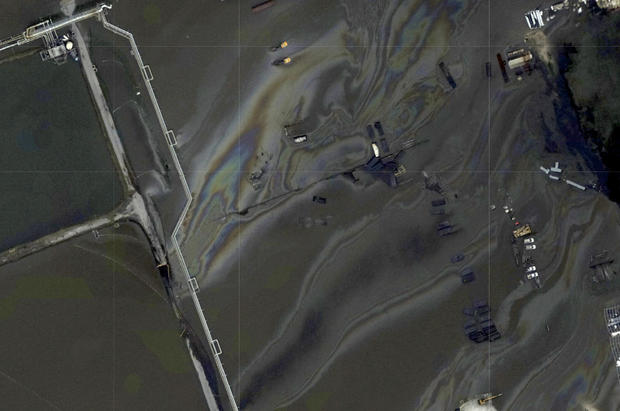Sheela Tobben
Thu., September 9, 2021

(Bloomberg) -- Asian buyers of crude from the U.S. Gulf of Mexico platforms that where shut by Hurricane Ida are now shopping for alternatives from Russia and the Middle East, sending prices tumbling.
American heavy crudes pumped off Louisiana’s coast, such as Mars and Poseidon, fell by more than $1 a barrel against New York oil futures Thursday. It’s a sudden shift from a rally in previous days as the impact of the devastating storm may not matter so much for China.
Buyers in the Asian powerhouse and other nations such as South Korea are looking at sour crude from the Middle East, where Saudi Arabia has slashed prices for oil destined to the Far East, traders said. For U.S. refiners, Russian Urals crude are being touted as an alternative.
Over 1 million barrels a day of output from the Gulf of Mexico is still offline more than a week after Ida hit, causing weekly U.S. production to sink by the most on record. But Chinese demand for U.S. sour crudes produced offshore has taken a sharp plunge this year, so the outage may not hurt Chinese refiners, Emmanuel Belostrino, an analyst at Kpler, said.
“Chinese demand for Mars crude has been eased substantially this year as U.S. crudes have been relatively expensive compared with other grades,” he said. “Also, China continues to take large quantities of Iranian crude oil despite sanctions, and that supply can replace sour grades normally purchased in the U.S.”
Royal Dutch Shell Plc’s decision to declare force majeure on “numerous” supply contracts as it assesses damages caused by Ida to its Gulf of Mexico platforms is also pushing buyers to other markets.
Shell’s offshore outages have caused “Chinese majors to scramble for alternatives for as many of the 10–12 million barrels of Mars cargoes bought for September and October loadings have been canceled,” Yuntao Liu, an analyst with London-based Energy Aspects, said in a note to clients.
Some of these Chinese buyers could well cover their needs from the release of oil from the country’s petroleum reserves announced Thursday
U.S. oil losses from Hurricane Ida rank among worst in 16 years
HOUSTON, Sept 7 (Reuters) – Hurricane Ida’s damage to U.S. offshore energy production makes it one of the most costly since back-to-back storms in 2005 cut output for months, according to the latest data and historical records.
Ida’s 150 mile-per-hour (240 kph) winds cut most offshore oil and gas production for more than a week and damaged platforms and onshore support facilities. About 79% of the region’s offshore oil production remains shut and 79 production platforms are unoccupied after the storm made landfall on Aug. 29.
Some 17.5 million barrels of oil have been lost to the market to date, with shutdowns expected to continue for weeks. Ida could reduce total U.S. production by as much as 30 million barrels this year, according to energy analysts.
Offshore U.S. Gulf of Mexico wells produce about 1.8 million barrels of oil per day, 16% of the daily U.S. total.
“There could be volumes that are offline for a considerable amount of time,” said Facts Global Energy (FGE) consultant Krista Kuhl. “It’s just too early to tell.”
The losses are reducing U.S. exports at a time when oil prices are trading at about $70 a barrel because of continued curbs by producing-nations group OPEC and market expectations for demand.
At least 78% of Gulf of Mexico oil and natural gas were offline on Tuesday, nine days after Ida hit the Gulf Coast, causing wind and water damages to platforms and refineries, government data showed.
Hurricanes Katrina and Rita in 2005 remain the worst hit to Gulf Coast energy facilities. The back-to-back storms caused production losses that continued for months, removing about 162 million barrels of oil over three months, FGE said.
Production in the U.S. Gulf of Mexico that year dropped 12.6%, to 1.28 million barrels per day (bpd), from the prior year, according to data for the Energy Information Administration (EIA). Total U.S. oil production fell 4.7%, EIA data showed.
Restoring output after Ida will hinge on the time needed to repair a key offshore oil and gas transfer facility. Royal Dutch Shell (RDSa.L) on Monday said it continued to assess damage to its West Delta-143 offshore platform, which transfers about 200,000 barrels of oil and gas per day from three offshore oil fields.
A group of thunderstorms in the south-central Gulf of Mexico was expected to move northeast. The storms have a 30% chance of developing into a tropical cyclone in the next two days, the National Hurricane Center said on Tuesday.
U.S. offshore oil industry assesses Hurricane Ida storm impact
(Bloomberg) - Oil and gas producers, and refineries that fuel the U.S., are assessing the impact on operations after the passage of Hurricane Ida.
At least 2 million barrels a day of oil refining capacity was affected by the weather pattern, which cut power across Louisiana and left at least one facility in standing water. About 95% of oil production, and 94% of gas output had been shut-in as of Monday, according to the Bureau of Safety and Environmental Enforcement.
Here is a list of major oil and gas production sites that were shut and their capacity in barrels per day, or barrels of oil equivalent a day.
Ports:
Refineries:




















